When you feel a need to connect to the history of Alpine skiing and snow sports. When you want to feel a connection to the early pioneers of our sport more than a century ago when there were no lifts and wooden skis were often homemade. When you want to feel true authenticity, the top choice has to be The Arlberg.
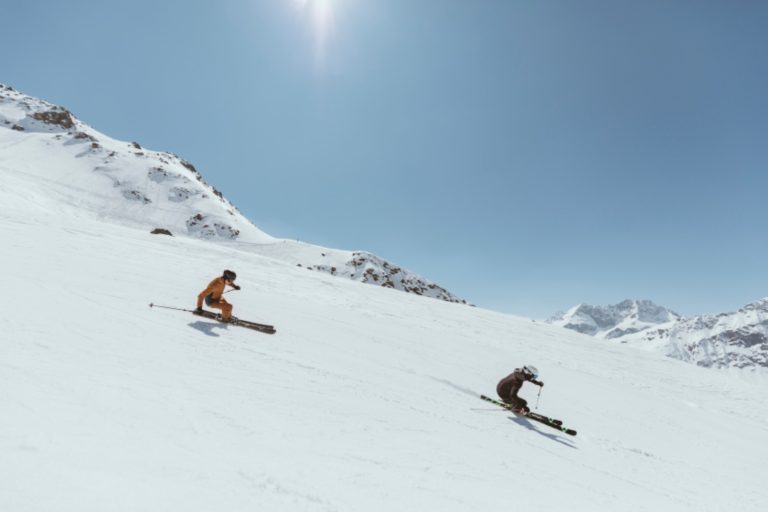
Arlberg Skiing © Arlberg Marketing, Christoph Schöch
Of course, things have moved on, this incredible ski region has grown into Austria’s and one of the world’s largest. It has installed state-of-the-art lifts to whisk you up the slopes those pioneers laboriously hiked up and the simple accommodations and eateries of 100 years ago are now luxurious and gourmet-rated. Indeed, The Arlberg has the highest density of Michelin-starred restaurants in Europe, with over 30 Gault Millau awards. That might have been hard to conceive 100 years ago, but still, it was the same onus on great food, locally sourced, then as now, that was part of The Arlberg’s rise to fame. So, the remains that authentic connection.
There’s a word that the Austrians use to describe this state of being, when everything has been fine-tuned to such an extent that all your needs are beautifully met and your set for the perfect ski holiday. It’s called ‘Lebensgefühl’.
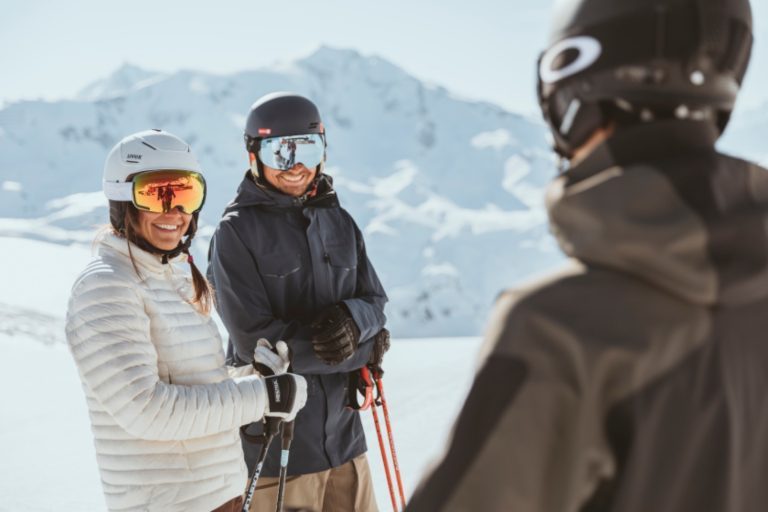
© Arlberg Marketing, Christoph Schöch
Whilst enjoying a fabulous holiday you can, therefore, still quickly connect back to simpler times as soon as you find yourself skiing the deep powder or just receiving the same warm welcome that has always been offered here.
The Arlberg
The Arlberg straddles the border between the Austrian provinces of Tirol and Vorarlberg and is home to the mountain villages of St. Anton, St. Christoph, Stuben, Lech and Zürs, all offering unique ski holiday experiences each interconnected by a huge network of ski slopes and fast, modern, comfortable lifts. As well as the incredible winter sports and stunning scenery for which the Arlberg is world-renowned, the region is also very highly rated for its culinary delights.
Although the adopted name of the ski region, unusually The Arlberg is not the name of a mountain or a ski region but of the mountain pass where the local people have provided hospitality to weary travellers for centuries.
Although united in a sense of tradition with a thirst for adventure, the five resort villages have different appeals.
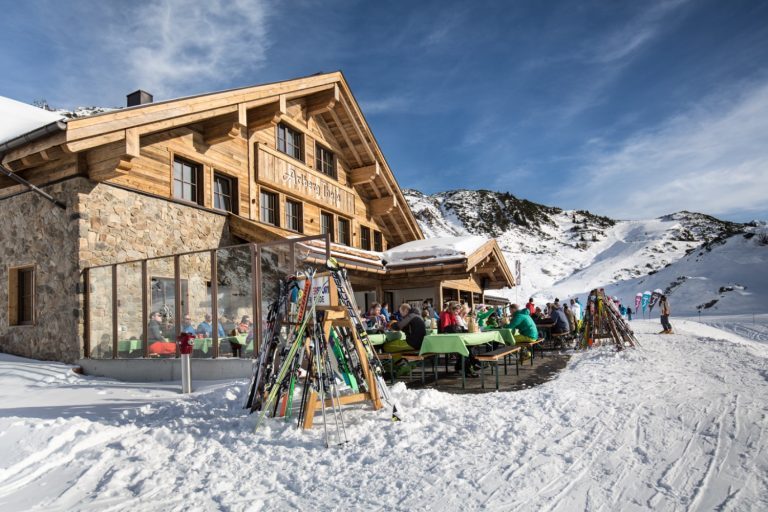
Arlberg Thaja in St. Christoph am Arlberg © TVB St. Anton am Arlberg
Lech, for example, manages to be both elegant and relaxed with a particularly strong gourmet reputation. Its famous near neighbour, the ski hideaway of Zürs, is full of luxury accommodation loved by the great, the good and even the royal! Stuben has a family-friendly reputation with St. Anton a legendary name in skiing. High altitude and historic St. Christoph is especially snowsure and another foodie paradise.
Wherever you choose to stay though, most new arrivals in The Arlberg are surprised at the vast array of quality accommodation options from bed and breakfast pensions to five-star hotels, from rustic holiday apartments to architectural trailblazers, although everything is designed to maintain the natural ambience of the resort.
Despite its global fame and fabulous facilities, The Arlberg’s villages remain down to earth, the locals always believe in sticking true to themselves with real authenticity and that common-sense Austrian attitude of Lebensgefühl.
The Snow
The Arlberg has a reputation for being one of the snowiest locations in the Alps, hoping to grow its legendary status as a freeride powder heaven. Snow depths recorded each winter since 1946/47 have averaged a very impressive 9 metres of fresh snow each season and snow depth total tables through the winter often show the Arlberg at or near the top.
The Slopes
Ski Arlberg, Austria’s largest interconnected ski area boasts over 300 km of pistes, and a further 200 km of high alpine deep snow (ungroomed) slopes served by 85 fast, modern ski lifts, gondolas and cable cars, climbing as high as 2,811m at the legendary Valluga peak.
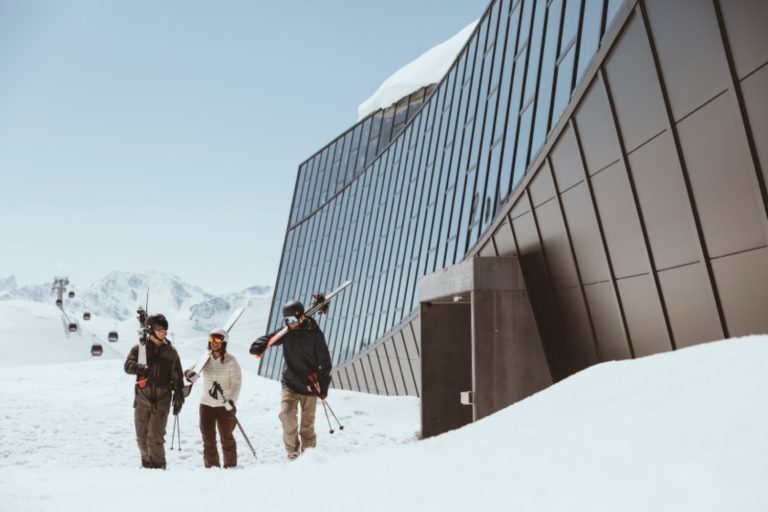
Arlberg Skiing at the Mountain Station © Arlberg Marketing, Christoph Schöch
Although it has a well-deserved reputation for its fabulous off-piste and expert-level terrain, it’s important to note that this vast area has something for everyone and some of its famous attractions like the White Ring circuit, a circular route around the slopes, can be tackled by intermediate level skiers. There are also areas set aside for complete novice and beginner skiers and boarders, including children and families, with great ski schools (13 of them in fact) ready to teach too.
There are also the fabulous Mohnenfluh Runs above Lech, Oberlech and Zürs, a curated collection of blue and red graded slopes that deliver perfect cruising, whether you want to just relax or to challenge yourself.
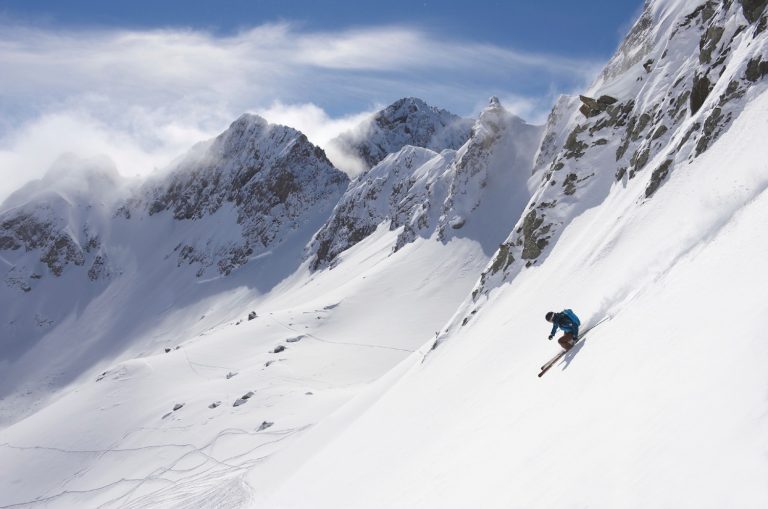
Freeride in Lech Zürs © Lech Zürs Tourism GmbH
Those 200km of deep powder runs are a big draw to experienced skiers and riders from all over the world though. They include many famous descents including The Zürser-Täli, a classic 4.2km long off-piste descent with great views that takes you to the Trittkopf Inn.
There’s also the option of tackling the 85 kilometres of The Run of Fame, a circular route with 18,000m of vertical drop in total which can be tackled in either direction but it suited to good skiers only.
The Food
Wearing ski boots to a gourmet lunch may sound a little de rigueur in many ski resorts, but the authentic combination of good skiing and good food makes it the norm in The Arlberg! Along with those 30 gourmet stars and chef’s hat awards though, there are hundreds more fantastic establishments that have been serving new twists on traditional recipes using ingredients sourced from local farms and dairies for generations. But in keeping with The Arlberg’s embracing the wider world too, there are many offering haute cuisine and international dishes too, both in the resort villages and high up in mountain huts on the ski slopes.
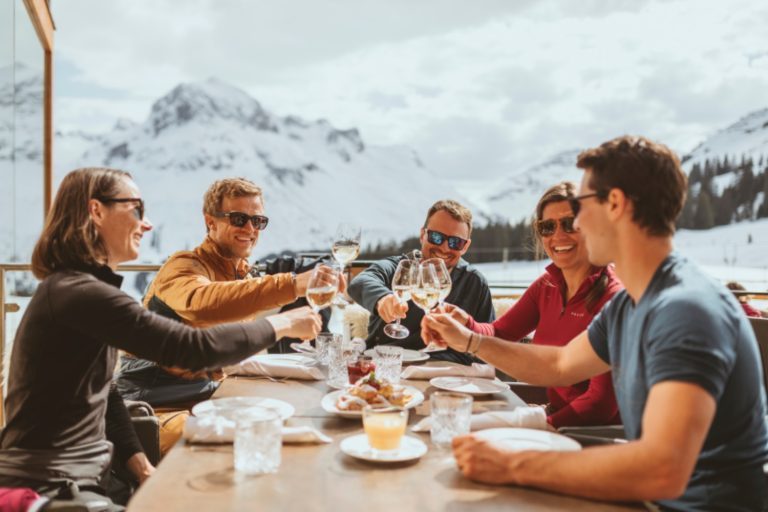
Arlberg Ski Hut © Arlberg Marketing, Christoph Schöch
Some of the many options include The Rüfikopf from where there are 360-degree panoramic view of the mountains of Lech Zürs and Zug as well as fabulous food.
Or there’s The Wolf, famed for mixing its flavours like Riebel and curry or lentil stew and burger – total opposites that somehow work together!
The Rud-Alpe, a converted hay barn is famed for its pan-fried dishes and grilled specialties.
And the Sennhütte served up great Tyrolean specialities on its huge sun deck.
Or Arlberg Thaja Genuss is another great choice for high-quality food and fine wines in a rustic, cosy Tyrolean atmosphere.
For the very highest levels of gastronomy, the Verwallstube in St. Anton has one of the most highly awarded gourmet restaurants in Europe.
Whilst Rote Wand, Chef’s Table, located in Zug’s old schoolhouse built nearly 250 years ago in 1780, has become one of the best culinary hotspots in the Alps.
Off Slope Activities
For non-skiers and indeed skiers looking for more activities besides the slopes, the Arlberg region offers a vast array of activities besides downhill.
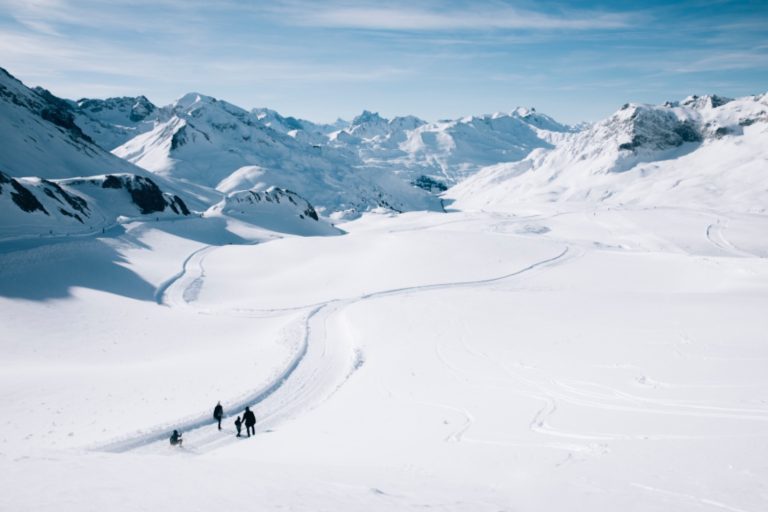
Winter hiking in Lech Zürs © Lech Zürs Tourism, Daniel Zangerl
Staying on the snow but keeping it simple there are 110 kilometres of groomed winter hiking trails: 110 km with a big variation on length and intensity of different paths. Or if you prefer to use skinny skis, there are 70km of cross-country ski trails too with rentals and tuition available if needed.
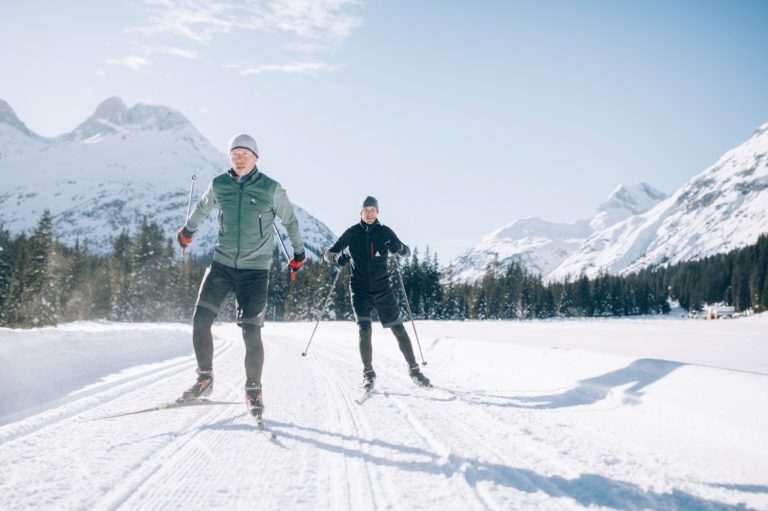
Cross-country skiing in Lech Zürs am Arlberg © Lech Zürs Tourism, Daniel Zangerl
Non-skiers can use much of the lift network in winter and summer with cosy gondola and cable car lifts to access high points like the Rendl mountain station where you’ll find the Rendl Beach Bar and great views of St. Anton and the surrounding mountains.
There are hundreds of enticing shops, cafes and other attractions ranging from the unusual such as the Skyspace art installation at Lech to the fun arl.park indoor trampoline park in St. Anton.
There are plenty of swimming pools and spa facilities in hotels and the public fitness and wellness facilities at Arlberg WellCom. You can also sign up for yoga classes among other healthy activities available.
The very highest part of the ski slopes can only be accessed by skiers and riders accompanied by a mountain guide, but for the rest of us, an ascent of the highest Vallugabahn II lift without our skis or snowboard takes us to the Valluga viewing platform on the roof of the highest lift station which offers incredible panoramic views. On a clear day that not only includes views of the surrounding mountains but across into five countries: Austria, Germany, Switzerland, Italy and Liechtenstein.
Those with a head for heights will also enjoy the winter Via Ferrata climbing on the Rendl.
Events
There’s a busy calendar of events through The Arlberg’s winter. Some fun celebrations of local importance, others attracting guests from all over the world.
Reminding us that fine dining and the best wines are a big part of the region’s traditions and offer, Lech Zürs starts its season with the 10-day Arlberg Weinberg festival from 5-17 December.
The season starts with a weekend of on and off-slope celebrations and fun at St. Anton with the Ski Opening from 6-8 December.
The Tanzcafé Arlberg Music Festival marks the season starting to wind down in all of the five Arlberg Villages, running from 30th March to 13th April 2025.
Stuben, meanwhile, celebrates the legendary longboard with its Longboard Classic on 56th April 2025.
The ‘White Thrill’ mass start downhill race, taking place on 19th April 2025 this season is always a spectacle of drama and excitement that marks the season nearing its end at St. Anton.
More Info:
Arlberg
Lech Zürs
St. Anton / St. Christoph
Stuben
Main image Skiers in Lech Zürs am Arlberg © Lech Zürs Tourism GmbH, Josef Mallaun
